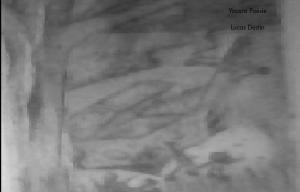| Author: | Arthur Wing Pinero | ISBN: | 1230000301386 |
| Publisher: | R. H. Russell | Publication: | February 18, 2015 |
| Imprint: | Language: | English |
| Author: | Arthur Wing Pinero |
| ISBN: | 1230000301386 |
| Publisher: | R. H. Russell |
| Publication: | February 18, 2015 |
| Imprint: | |
| Language: | English |
Example in this ebook
THE FIRST ACT.
The scene represents a sitting room on the first floor of a respectable lodging house. On the right are two sash-windows, having Venetian blinds and giving a view of houses on the other side of the street. The grate of the fireplace is hidden by an ornament composed of shavings and paper roses. Over the fireplace is a mirror: on each side there is a sideboard cupboard. On the left is a door, and a landing is seen outside. Between the windows stand a cottage piano and a piano stool. Above the sofa, on the left, stands a large black trunk, the lid bulging with its contents and displaying some soiled theatrical finery. On the front of the trunk, in faded lettering, appear the words "Miss Violet Sylvester, Theatre Royal, Drury Lane." Under the sofa there are two or three pairs of ladies' satin shoes, much the worse for wear, and on the sofa a white-satin bodice, yellow with age, a heap of dog-eared playbooks, and some other litter of a like character. On the top of the piano there is a wig-block, with a man's wig upon it, and in the corners of the room there stand some walking sticks and a few theatrical swords. In the center of the stage is a large circular table. There is a clean cover upon it, and on the top of the sideboard cupboards are knives and forks, plate, glass, cruet-stands, and some gaudy flowers in vases—all suggesting preparations for festivity. The woodwork of the room is grained, the ceiling plainly whitewashed, and the wall paper is of a neutral tint and much faded. The pictures are engravings in maple frames, and a portrait or two, in oil, framed in gilt. The furniture, curtains, and carpet are worn, but everything is clean and well-kept.
The light is that of afternoon in early summer.
Mrs. Mossop—a portly, middle-aged Jewish lady, elaborately attired—is laying the tablecloth. Ablett enters hastily, divesting himself of his coat as he does so. He is dressed in rusty black for "waiting."
To be continue in this ebook
Example in this ebook
THE FIRST ACT.
The scene represents a sitting room on the first floor of a respectable lodging house. On the right are two sash-windows, having Venetian blinds and giving a view of houses on the other side of the street. The grate of the fireplace is hidden by an ornament composed of shavings and paper roses. Over the fireplace is a mirror: on each side there is a sideboard cupboard. On the left is a door, and a landing is seen outside. Between the windows stand a cottage piano and a piano stool. Above the sofa, on the left, stands a large black trunk, the lid bulging with its contents and displaying some soiled theatrical finery. On the front of the trunk, in faded lettering, appear the words "Miss Violet Sylvester, Theatre Royal, Drury Lane." Under the sofa there are two or three pairs of ladies' satin shoes, much the worse for wear, and on the sofa a white-satin bodice, yellow with age, a heap of dog-eared playbooks, and some other litter of a like character. On the top of the piano there is a wig-block, with a man's wig upon it, and in the corners of the room there stand some walking sticks and a few theatrical swords. In the center of the stage is a large circular table. There is a clean cover upon it, and on the top of the sideboard cupboards are knives and forks, plate, glass, cruet-stands, and some gaudy flowers in vases—all suggesting preparations for festivity. The woodwork of the room is grained, the ceiling plainly whitewashed, and the wall paper is of a neutral tint and much faded. The pictures are engravings in maple frames, and a portrait or two, in oil, framed in gilt. The furniture, curtains, and carpet are worn, but everything is clean and well-kept.
The light is that of afternoon in early summer.
Mrs. Mossop—a portly, middle-aged Jewish lady, elaborately attired—is laying the tablecloth. Ablett enters hastily, divesting himself of his coat as he does so. He is dressed in rusty black for "waiting."
To be continue in this ebook















